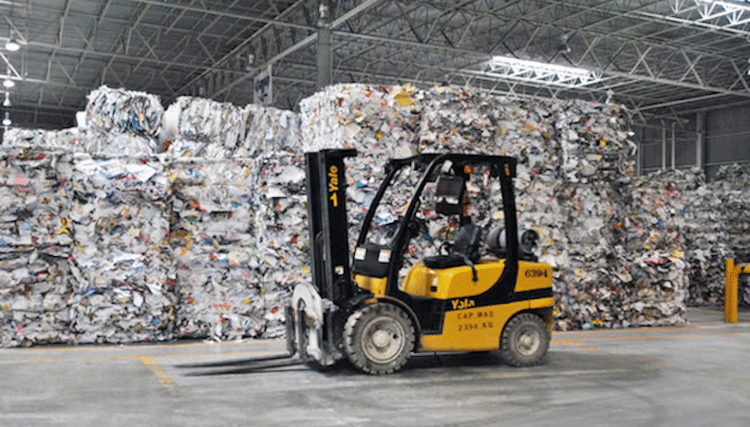Recycling paper getting complicated

In this week's Verdigris blog Laurel Brunner reflects on how the growing number of digital printing technologies calls for a new approach to recyclability.
One of the biggest problems for makers of paper based on recycled printed matter is quality, meaning cleanliness. Ensuring that the waste paper entering the recycling stream is sufficiently uncontaminated for use as a raw material for new products is hard.
Generally pulp and paper mills rely on a test procedure to check that the inks and coatings on a batch of printed matter can be removed, prior to processing. This is one of the basics of quality assurance in this sector.
That works fine for standard inks, but ink recipes, coatings and curing processes keep on changing. Innovations such as UV curing and the preference for more exotic coatings for prints, mean that new approaches to testing and preparing printed matter for recycling are needed. Paper mills have introduced new processes for prints that may be difficult to clean.
But this can make batch processing harder. It requires sorting of the materials to turn them into new graphic papers or downcycle them for cardboard, eggboxes and the like. As waste paper volumes rise along with printing innovations, the need for new approaches to their processing becomes more acute.
Nippon Paper Industries has recently filed a European patent that uses light to separate prints that are easily deinked, from those that are not. It provides a means of quickly sorting printed matter to single out the materials that are suitable as raw materials for recycled paper products.
They are identified using light and measuring the light that gets reflected. Depending on the amount of light that is soaked up by the printed matter, the material will be routed for different processing methods.
Nippon Paper's patent allows for waste paper to be sorted so that the material that is suitable for new high quality papers can be separated from the dross. This solves the problem of pulp pollution from printed papers that have been UV cured or coated with resin films.
If they find their way into the production of new papers either intense mechanical processes of lots of chemicals are required to maintain quality. This can cause deterioration in the paper fibres and add costs which paper makers want to avoid.
Treating hard to recycle prints as rejects essentially removes them from the recycling supply chain. The Nippon Paper patent proposes a way to sort the raw material into different categories based on their suitability for deinking. We look forward to learning more about how this will be implemented.
Source: This article was produced by the Verdigris project, an industry initiative intended to raise awareness of print’s positive environmental impact. This commentary helps printing companies keep up to date with environmental standards, and how environmentally friendly business management can help improve their bottom lines. Verdigris is supported by the following companies: Agfa Graphics, Spindrift.click, EFI, FESPA, HP, Kodak, Kornit Digital, Ricoh, Splash PR, Unity Publishing and Xeikon.
Topics
Interested in joining our community?
Enquire today about joining your local FESPA Association or FESPA Direct
Recent news

Streamlining personalisation with tech: Insights from the SmartHub Conference 2025 speakers
Personalisation Experience 2025 (6 – 9 May 2025, Messe Berlin, Germany) is running its inaugural SmartHub Conference from 6 – 8 May 2025.

Special Effects in DTF: How Neon Inks Are Making Apparel Pop
Neon fluorescent inks are the latest innovation in DTF printing, offering vibrant, eye-catching effects under both daylight and UV light, giving apparel decorators a competitive edge. Testing shows good wash durability, though market perception of added value is still developing. With increasing adoption and ongoing technological advancements, neon represents a significant upgrade for creative customisation.

Unlocking Growth Opportunities in the Printed Personalised Apparel Industry
The printed personalised apparel industry is booming, projected to reach $10.1 billion by 2030. Driven by consumer desire for self-expression and branding needs, technological advancements like DTG/DTF and e-commerce integration are key. Sustainability, eco-friendly materials, and on-demand printing are crucial growth drivers. Businesses leveraging these trends, including AI and social media, have significant commercial potential.

How to grow your business with white ink applications
Opaque white ink is revolutionising signage, vehicle graphics, wallcoverings, short-run and wood packaging, and window blinds by enhancing vibrancy and clarity. This enables printers to offer high-demand, standout products, boosting profit margins. HP Latex white ink applications and their large format printing solutions will be showcased at FESPA 2025 in Berlin.